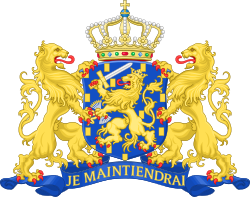| | |||||||||||||||||||||||||||||||||||||||||||||||||||||||||||||||||||||||||||||||||||||||||||||||||||||||||||||||||
3 July 1918 | |||||||||||||||||||||||||||||||||||||||||||||||||||||||||||||||||||||||||||||||||||||||||||||||||||||||||||||||||
All 100 seats in the House of Representatives 51 seats needed for a majority | |||||||||||||||||||||||||||||||||||||||||||||||||||||||||||||||||||||||||||||||||||||||||||||||||||||||||||||||||
This lists parties that won seats. See the complete results below.
| |||||||||||||||||||||||||||||||||||||||||||||||||||||||||||||||||||||||||||||||||||||||||||||||||||||||||||||||||
| This article is part of a series on |
| Politics of the Netherlands |
|---|
 |
General elections were held in the Netherlands on 3 July 1918. [1] They were the first elections held after a series of reforms that introduced universal male suffrage and pure proportional representation, replacing the previous two-round system in single member constituencies. [2] This change was known as the Pacification of 1917, which also included the introduction of state financing of religious schools, and led to the start of consociational democracy. [3]
The change in the electoral system led to major changes in the political makeup of the House of Representatives. The confessional right-wing parties, the General League of Roman Catholic Electoral Associations, the Anti-Revolutionary Party and the Christian Historical Union, together won 50 seats.
The liberal parties lost the most seats. While in 1917, two of the liberal parties, the Liberal Union and the League of Free Liberals, had won 31 seats, they were now reduced to 10 seats. Together with three smaller liberal parties, liberals now held only 15 seats in the House of representatives.
The fragmentation of the House was caused by the low electoral threshold of just 0.5%, with the smallest party, the Alliance to Democratise the Forces, managing to win a seat with only 6,828 votes.
The elections were the first in which Dutch women could stand for election, despite still not being allowed to vote. Suze Groeneweg was elected as the first female member of the House of Representatives. [4]

